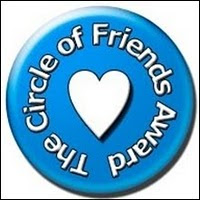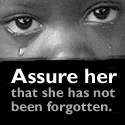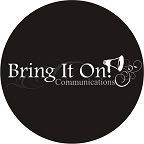Very often, people read the Bible and have a hard time relating to it in the past-paced and modern society in which we live. In his book, ‘CrossTalk: Where Live and Scripture Meet
Here is the synopsis of this book:
An Antidote to “Take Two Verses and Call me in the Morning”
Your friend just left his wife. You catch your child posting something inappropriate on the internet. Someone in your small group is depressed. A relative was just diagnosed with an incurable disease. When those you know and love experience trouble, you don’t want to hand out pat answers or religious platitudes. Instead, you want to offer real hope and help from God’s Word. You know it’s true, but how does an ancient book, written thousands of years ago, connect with your twenty-first century problems?
In Crosstalk: Where Life & Scripture Meet , Michael R. Emlet gives you the tools to connect the Bible to your life and to the lives of your family, friends, neighbors, and coworkers. Using case studies and concrete examples, Emlet gives practical direction for how to effectively apply Scripture to everyday problems. You will learn to understand people and God’s Word in ways that promote gospel-centered, rich conversations to help you and those you know grow in love for God and others. This book will make the whole Bible come alive for you. Instead of platitudes, you can offer a cup of living water to those who are struggling in this broken world.
, Michael R. Emlet gives you the tools to connect the Bible to your life and to the lives of your family, friends, neighbors, and coworkers. Using case studies and concrete examples, Emlet gives practical direction for how to effectively apply Scripture to everyday problems. You will learn to understand people and God’s Word in ways that promote gospel-centered, rich conversations to help you and those you know grow in love for God and others. This book will make the whole Bible come alive for you. Instead of platitudes, you can offer a cup of living water to those who are struggling in this broken world.
Here is the author’s biography:
Michael R. Emlet, M.Div, M.D., practiced as a family physician for twelve years before becoming a counselor and faculty member at the Christian Counseling & Education Foundation. His responsibilities for CCEF include counseling, teaching, directing the CCEF Counseling Internship program, writing, and speaking. He is the author of many counseling articles and booklets. Dr. Emlet received a M.D. from the University of Pennsylvania and an M.Div from Westminster Theological Seminary, Philadelphia, PA. He resides near Philadelphia with his wife and two children. He enjoys camping, gardening, and making pottery at his community art center. He and his family are active members in their local church where he serves as a small group leader.
Here is Dr. Emlet discussing his book:
Dr. Emlet provides his summation on why he wrote this book:
To sum up, this book can help you to read the Bible and “read” people in a way that promotes gospel-centered, personally relevant use of Scripture in ministry to others. It describes a way to use the Scriptures to help people grow to love God and others more fully in the midst of their complex daily lives. (p. 4)
And here he explains who would gain from owning/reading ‘CrossTalk’:
Here’s the bottom line: this book is for anyone who takes the “one another” passages of the Bible seriously and is eager to use the richness of Scripture to minister wisely to the people God has placed in his or her sphere of influence. It is for anyone who has been captured by Paul’s vision for God’s people, namely “that the body of Christ may be built up until we all reach unity in the faith and in the knowledge of the Son of God and become mature, attaining to the while measure of the fullness of Christ” (Eph 4:12-13) (p. 5)
Here is the explanation of his approach – that Scripture needs to be used in counseling/ministry:
This good news reaches God’s people in the trenches of life and is tailored to the particularities of life. Any attempts at ministering God’s Word that do not fundamentally connect the good news of the Redeemer, Jesus Christ, with the details, themes, and plotlines of people’s lives will miss the mark (or land off the target altogether!). Hence, it is appropriate to call the approach of this book “redemptive-historical” or “gospel-centered” application. It is an approach that takes the narrative (storied) nature of the Bible seriously in order to make wise connections with the narratives of our lives. Understanding both the Story of God and the stories of the people we serve is necessary to help others embrace the transformation the Bible envisions for God’s people. (p. 7)
He goes on to explain the goal of this book:
Put simply, the overall goal of this book is to help you live a biblically rich, Christ-centered life in community with fellow believers. It will equip you to make more sense of the details of the Bible and the details of people’s lives. It will equip you to see how the diverse writings of Scripture have a cohesive, kingdom-centered thrust. And it will help you discern life patterns, themes, and plotlines that underlie the details of people’s experiences. Ultimately, it should equip you to more carefully read the story of the Bible and diverse stories of the people you know and to make meaningful connections between the two.
…CrossTalk focuses our attention on the intersection of two kinds “speech” – the story of Scripture and the stories of people’s lives. This is the place of application. This is CrossTalk in action. (pp. 8-9)
What an interesting approach; that makes a lot of sense to me!
Connecting the Bible and life can sometimes be difficult. Dr. Emlet’s term for it is the “Ditch vs. Canyon Phenomenon”:
What I mean is this: sometimes use of Scripture in ministry has the feel of stepping across a ditch (easy!) and sometimes it has the feel of stepping across a canyon (impossible!). The challenge, really, is how to bridge the gap between an ancient biblical text and a present-day life situation. How do we attempt to bridge that divide? Most of the time we assume that a direct line of connection must exist between the situation then (in the text) and the situation now. Or at the very least we think we can extract some “timeless principle” from the text and bring it to the present. This mind-set, where we assume some kind of one-to-one correspondence between a text then and a situation now, is admirable in its goal to “make” the Scriptures relevant to the believer today. (p. 15)
Dr. Emlet emphasizes the importance of the Holy Spirit in this process:
We share the same struggles common to people of all eras, so we should expect God’s revelation to them to resonate with us. In addition, let’s not forget that God’s Spirit gives wisdom and direction in the application of Scripture to life. Although I will stress throughout this book the importance of deeper study of Scripture and people, I want to affirm the often impromptu Spirit-led connection between the Bible and life that you have experienced in ministry. You already have the mind of Christ (1 Cor. 2:16). At the same time, just because God’s Spirit graciously uses your current knowledge of Scripture to connect with people, that doesn’t mean you shouldn’t dig deeper as you have opportunity. View this book, then, as an opportunity to dig for more treasure, even as you use and enjoy the riches you already have found! (p. 18)
In Chapter 3, Dr. Emlet declares what the Bible is:
If you read the Bible from cover to cover you realize that it narrates (proclaims!) a true and cohesive story: the good news that through Jesus Christ God has entered history to liberate and renew the world from its bondage to sin and suffering. This is the story of God, who pursues the restoration of his creation at the cost of his own life. His is making all things new (Rev. 21:5)! That’s the simple and yet profound, life- and world-altering plotline of the Bible. Don’t you want to live in light of that plot? Don’t you want to help others do the same? No part of our lives should remain unchanged as we are captured by this redemptive story. (p. 41)
My answers to both of those questions – “yes” and “yes”!
The general characteristics of Jesus’ life connect with Israel:
But he completes Israel’s story in an unexpected way. He does not reestablish the renewing rule of God by freeing the Jews from exile and from enemy rule in accordance with Old Testament prophetic declarations (e.g., Is. 52:7-10; 59:16-20; Zech. 8:3). Instead, he becomes the Passover Lamb, the final sacrifice for the sins of his people (Matt. 20:28; 1 Cor. 5:7; Heb. 9:11-15; 10:11-14). Suffering, humiliation, a cross and death would precede glory. Sacrifice would precede celebration and vindication. (p. 45)
It is important that we read the Bible from back-to-front, and front-to-back:
[K]nowing the end of the biblical story means we can never read the earlier parts in the same way. That’s certainly true for the way Jesus and the New Testament writers read and interpret the (Old Testament) Scriptures… Knowing how the story ends, we ask “What difference does the death and resurrection of Jesus make for how I understand this passage?” The death and resurrection of Jesus Christ is the climax of redemption initiated in the Old Testament and the sure foundation for the life of the newly formed church. .. So whether we find ourselves in the Old Testament or New Testament, we expect to discover an organic connection to the person and work of Christ, with multi-faceted implications for the lives of God’s people. (p. 54)
It is important that we have the same worldview that God has:
Seeing the Bible as a unified story of God’s redemptive mission helps us avoid introspective, individualistic application. The endpoint of redemption isn’t a redeemed and transformed individual life (your own or another’s) – it is the restoration of all things! Have you caught that immense vision? Does it saturate your life and ministry? We can settle for so little in our use of Scripture, even when we genuinely look to the Scriptures to guide our lives. We are, to paraphrase, C.S. Lewis, like children content to make mud pies in the backyard when a beach vacation is offered to them. Do we keep before us the hope that “the earth will be filled with the knowledge of the glory of the LORD, as the waters cover the sea” (Hab. 2:14)? (pp. 57-58)
And it’s also important that we look at the Bible as a whole to order to have a whole life:
Because we tend to use “bits” of the Bible for disconnected “bits” of daily life without paying attention to the whole, the whole of people’s lives don’t change. A dis-integrated Bible often leads to dis-integrated, compartmentalized lives. This doesn’t mean we have to tell the whole story every time we minister the Word. Many conversations don’t permit such depth. But it does mean that the sweeping, Christ-centered plotline of Scripture increasingly shapes the way we view and use any passage. (p. 62)
We need to look at people in terms of three categories: saints, sufferers and sinners.
Here are questions for the saint (p. 95):
1. What evidence of God’s grace do you see in the person’s life?
2. In what ways do you see the individual already living true to her identity in Christ? (That is, how does the person already exhibit the character of Christ in word and deed?).
Here are questions for the sufferer (p. 97):
1. What significant situational stressors is he currently facing? Consider things like body/health issues (“intrapersonal” influences), relational pressures (“interpersonal” influences), and circumstantial and social/cultural influences).
2. What were the significant shaping events of his life?
3. How has he been sinned against?
4. How is the person experiencing his problems?
Here are questions for the sinner (p. 98):
1. What desires, thoughts, emotions, and actions are out of line with gospel/kingdom values?
2. What motives, themes, and interpretations of life “compete” with the biblical story?
Dr. Emlet goes on to provide two case studies of people who have problems they need to work through (a man with problems in his marriage and an addiction to pornography; a woman who is questioning her life and life’s work). He provides examples of his approach using the Old Testament and the New Testament.
Dr. Emlet concludes his book this way:
I’m convinced that, in large measure, it is because we have ignored the redemptive-historical character of God’s story and the narrative structure of people’s lives as saints, sufferers, and sinners. As a result, our use of Scripture never really connects the heart of people’s struggles with the glorious, unfolding story of redemption that climaxes in the coming of Jesus. Details of the Bible are disconnected from the details of people’s lives when we overlook the redemptive meta-narrative that encompasses them both.
My hope in writing this book is that the music people would hear as we use the Scriptures would be a gospel-rich, kingdom-focused, Christ-centered symphony in their ears, with the result that the alternative (and ultimately false) voices and stories that beguile them are drowned out increasingly to insignificance. May you increasingly know the One to whom the story of Scripture points so that no matter where you are in the Bible, you may consistently help your fellow saints, sufferers, and sinners live out his powerful and redemptive message. (pp. 178-179)
I thought this book was incredible. Dr. Emlet writes in a style that is understandable to the layman, yet sophisticated enough for the professional. I think this book should be in the library of all churches and counseling centers. It is also valuable for the individual who wants to be better at incorporating life and Scripture for application on self and on others. In my opinion, life change can only really happen when Jesus Christ is at the center, and Dr. Emlet keeps Him right where He needs to be. I thank Dr. Emlet for writing such a useful and practical book.
This book was provided by New Growth Press for review purposes.




























.jpg)







No comments:
Post a Comment